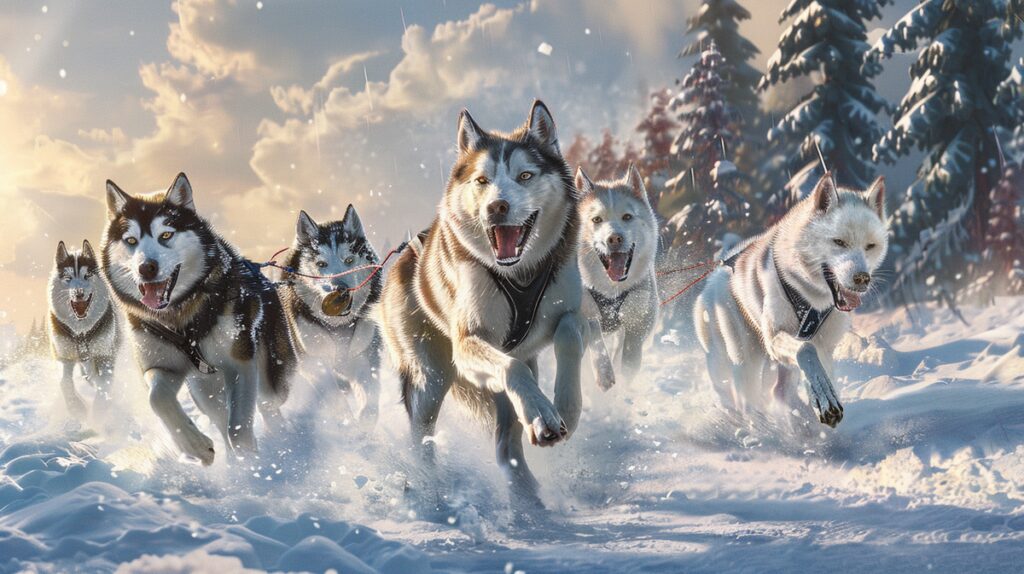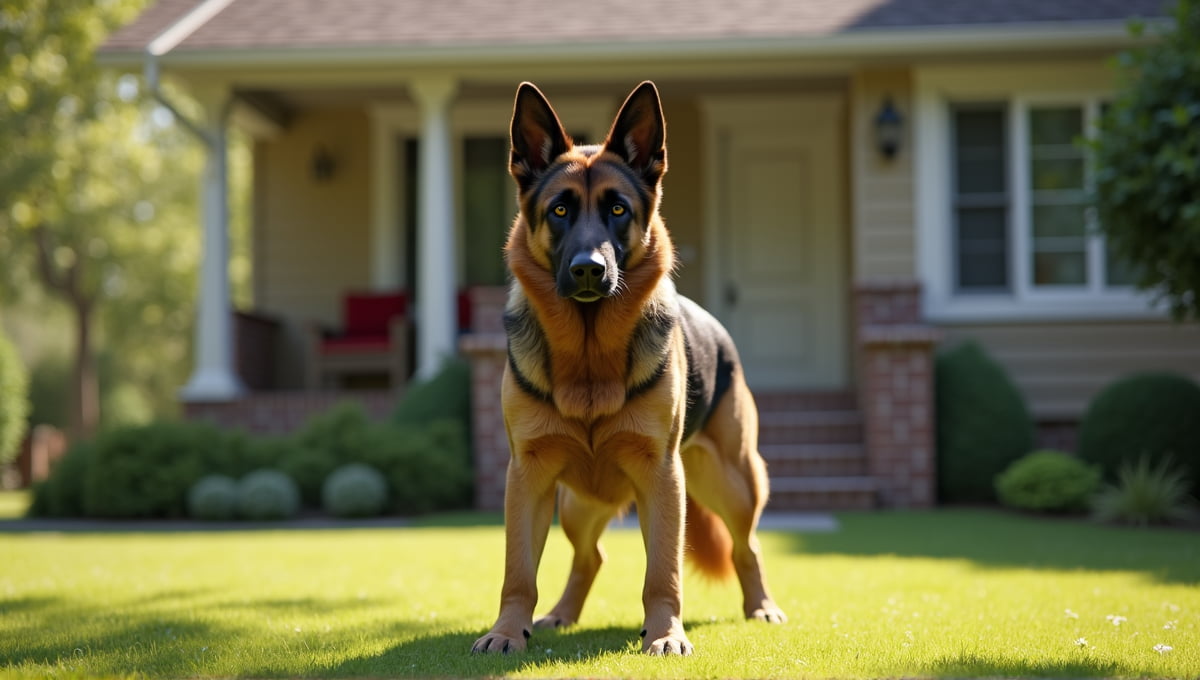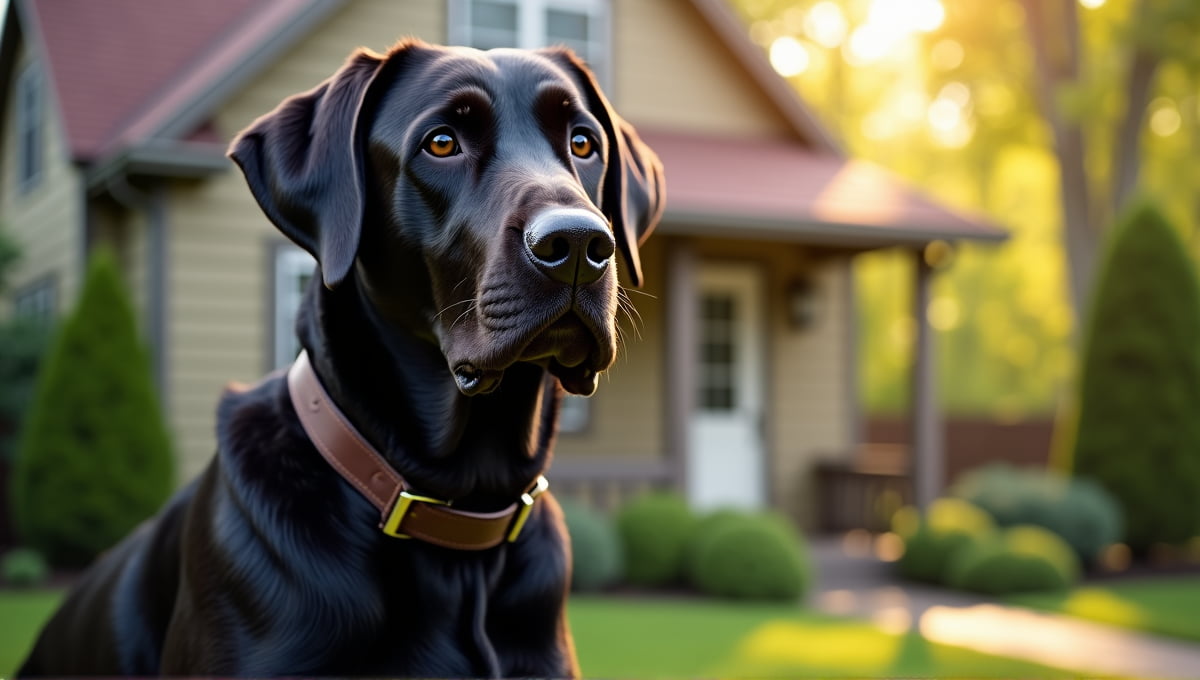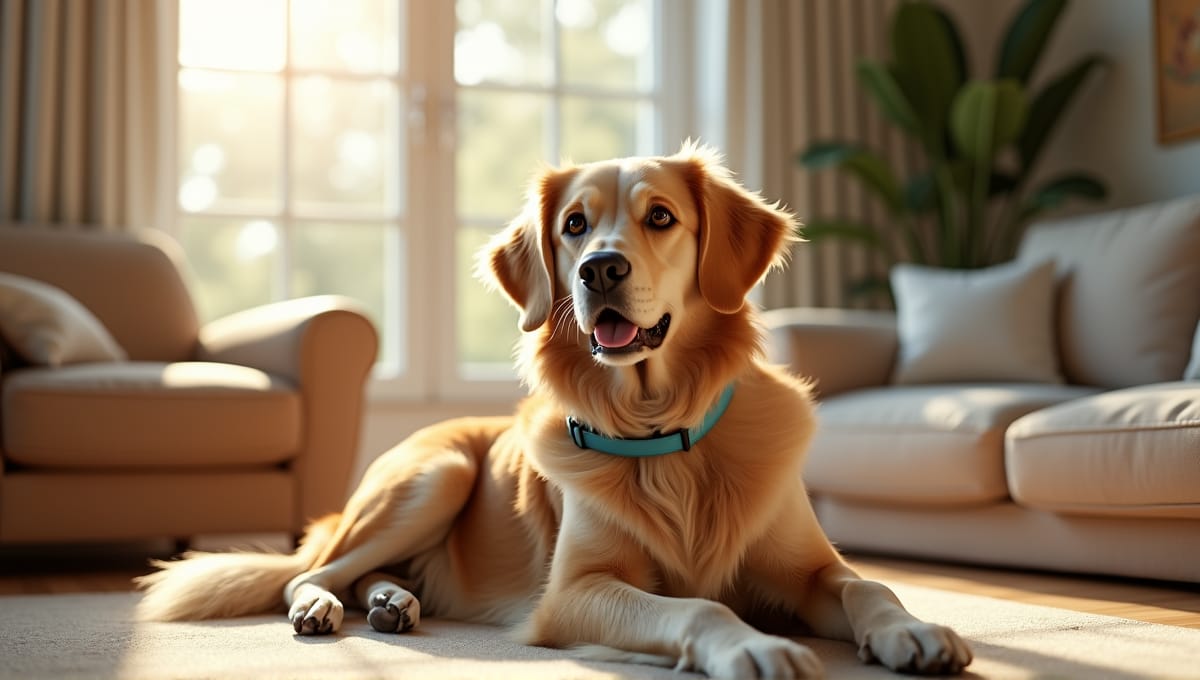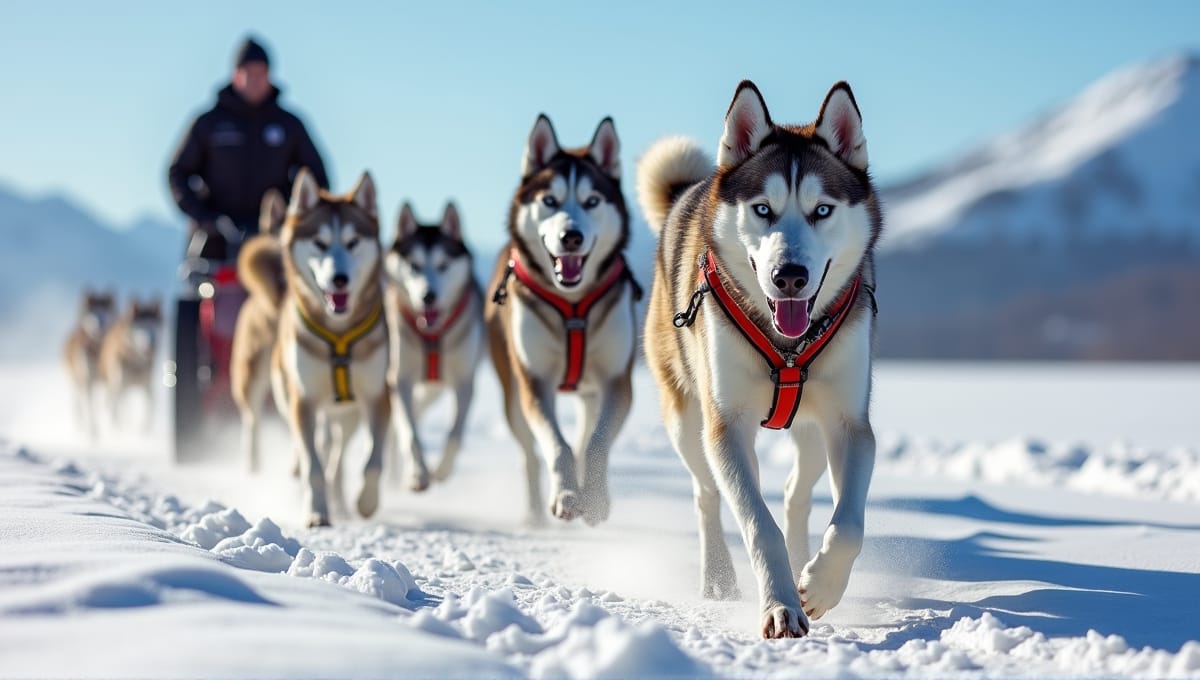sled dog breeds are a unique group with distinct characteristics that distinguish them from other dogs. These strong breeds have been essential in Arctic and sub-Arctic climates for millennia.
I’m a dog expert, and I’ve done a deep dive into the history and attributes of sled dogs. You won’t believe the strength and endurance of these breeds. So, without further ado, here are the best sled dog breeds and what makes them so good at the job.
Sled Dog Breeds Overview
Sled dogs are working dogs bred for strength, endurance, and the ability to pull a sled over snow and ice. These dogs have a long history of being a cornerstone of survival and exploration in Arctic regions, so they are some of the most remarkable canines on the planet. The history of sled dogs is an intriguing story:
- Archaeological evidence shows that the human use of dogs to pull sleds can be traced back at least 8,000 years.
- Sled dog breeds developed independently from native peoples in Siberia, Alaska, and Greenland.
- European explorers began using sled dogs to support Arctic expeditions in the 19th and 20th centuries.
- Sled dogs were the primary mode of transportation and communication in polar regions before the invention of motorized vehicles.
Sled dog breeds all share many of the same characteristics. They have thick double coats, strong, stocky bodies, and good endurance. Most sled dogs are medium to large dogs with erect ears and bushy tails.
Even today, sled dogs are still relevant in the Arctic and subarctic regions for transportation, hunting, and other purposes. You can still find working sled dogs in a few indigenous communities and sled dog racing and tourism. These dogs are truly incredible, and they’re just as beautiful and strong as they’ve always been, so it’s no surprise that they continue to capture the human imagination.
Popular Sled Dog Breeds
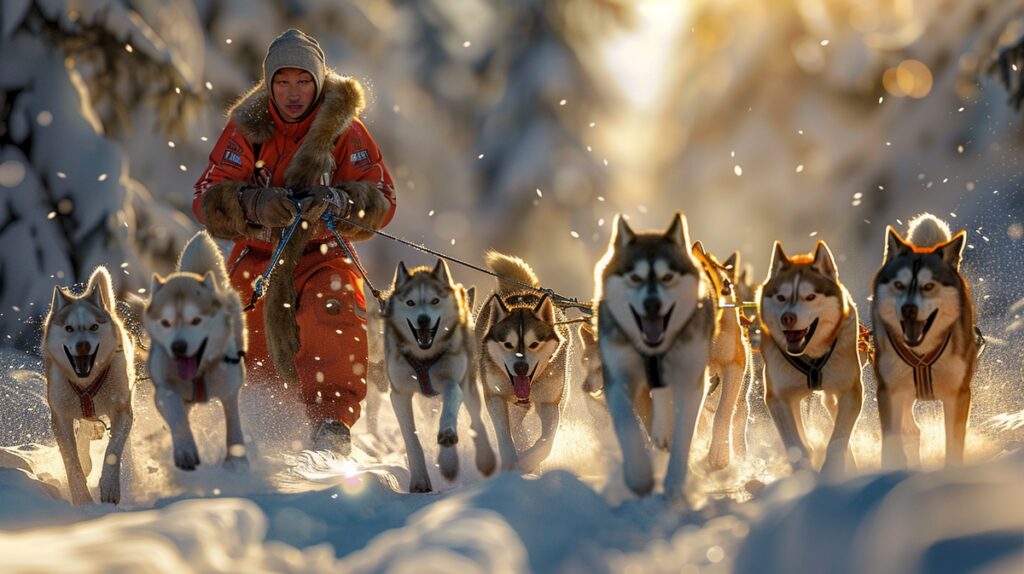
Siberian Husky:
- Medium-sized dog with a wolf-like look
- Blue or brown eyes (or one of each)
- Very friendly and outgoing
- Extremely high energy and great stamina
Alaskan Malamute:
- Largest and most powerful dog
- Thick, coarse guard coat
- Loving, yet independent
- Extremely hard workers
Greenland Dog:
- Very thick, furry coats and curly tails
- Very muscular with great endurance
- Often reserved with strangers and loyal to their families
- Estimated population of 16,000 Greenland Dogs in 2016
Canadian Eskimo Dog:
- Powerfully built with a thick, strong neck
- Double coated with a woolly undercoat and stiff, coarse guard hairs
- Highly intelligent and loyal to the owner’s working agenda
- Now a very rare breed
Samoyed:
- Very unique, fluffy white coat
- Smiling, friendly face
- Very gentle and social
- Initially bred to herd reindeer
Each breed has something special about it. Yet, they all have something in common that makes them great sled dogs in the arctic. Their dense coats protect them from extreme cold, and their strong, muscular bodies are capable of pulling heavy loads for long stretches.
Physical Attributes of Sled Dogs
Sled dogs vary in size, with the average sled dog weighing about 25 kg. However, their weight can range from 16 kg to 32 kg depending on the breed. Here’s a comparison of the most common sled dog breeds:
| Breed | Weight Range (kg) | Height Range (cm) |
|---|---|---|
| Siberian Husky | 16-27 | 51-60 |
| Alaskan Malamute | 34-39 | 58-64 |
| Greenland Dog | 30-40 | 56-68 |
| Canadian Eskimo Dog | 30-40 | 58-69 |
| Samoyed | 23-30 | 48-60 |
Sled dogs have thick double coats with a coarse, water-resistant outer layer and a warm insulating undercoat. They have a compact build for excellent endurance, with powerful legs and a flexible spine.
Sled dogs are very quick and can run at speeds of up to 45 kph. They also have exceptional stamina and can easily travel 150 km in a day or more. Ultimately, sled dogs are perfectly designed for both speed and stamina in the Arctic.
Historical Use and Evolution of Sled Dogs
Sled dogs have a long history that dates back thousands of years. Recent research shows that domesticated sled dogs lived in northeastern Siberia as far back as 9,000 years ago. These ancient sled dogs were working animals that played a critical role in human survival and migration across the Arctic.
People then selectively bred sled dogs for specific traits. One of the most important characteristics was size. The ideal sled dog was about the size of a modern sled dog – approximately 20-25 kg. This size was the perfect compromise for thermoregulation in cold climates. Dogs that were larger than this would overheat while dogs that were smaller would lose heat too quickly.
Sled dog numbers have risen and fallen through the years. In Russia, sled dog populations experienced a massive decline from the 1940s to the 1990s, with the country counting only about 3,000 sled dogs in 1998. The decline was largely because people’s lifestyles changed, and they began using snowmobiles.
Sled dogs were also crucial for Arctic exploration. Major expeditions like Roald Amundsen’s journey to the South Pole wouldn’t have been possible without sled dogs. They were the only way to cover vast distances and carry enough supplies in the world’s most extreme environments.
Training and Care of Sled Dogs
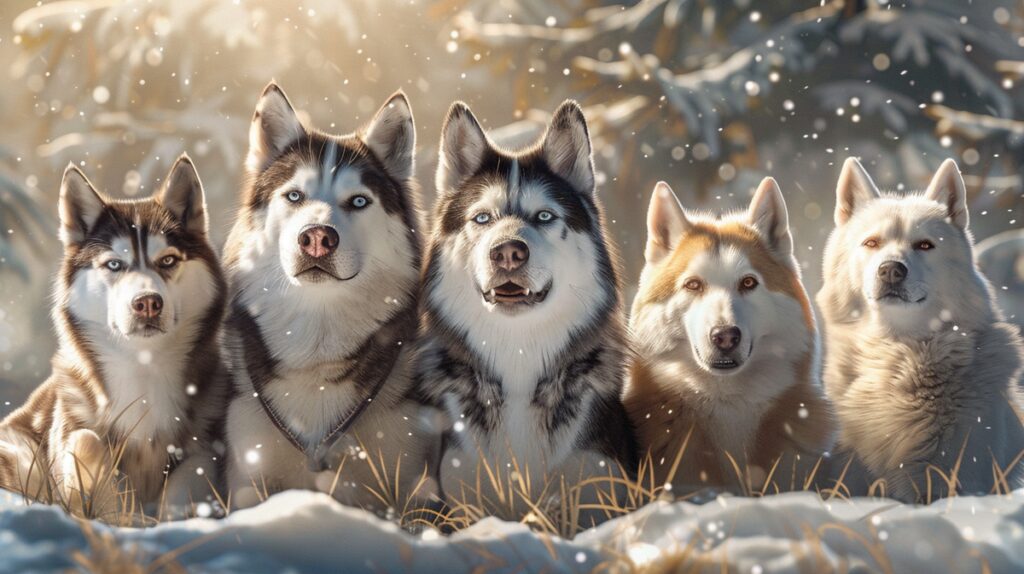
Training sled dogs takes time and patience. You teach them basic commands like “gee” (go right) and “haw” (go left) and then gradually transition them to pulling a lightweight sled as they master those commands.
Proper food is essential for sled dogs, which require a high-calorie, protein- and fat-rich diet. During peak racing season, a sled dog might burn 12,000 calories in a day. For context, the average adult human only needs around 2,000 calories in a day!
Regular exercise is important for any dog, and sled dogs are no exception. In addition to long walks, runs, and other physical activities, sled dogs need mental exercise through training and problem-solving games to prevent boredom.
Sled dog health care requirements include:
- Routine veterinary care
- General foot care to avoid injuries from snow and ice
- Awareness of the signs of hypothermia and overheating
- Genetic testing for common breed-related health concerns
When properly cared for, sled dogs make happy, healthy working animals for many years.
Sled Dog Teams and Mushing
A standard sled dog team features 6 to 16 dogs, each with a unique role:
- Lead dogs: Typically 1-2 dogs at the front of the team that set the pace and follow the musher’s commands.
- Swing dogs: Dogs positioned directly behind the lead dogs that help make turns.
- Team dogs: The main power in the middle of the team.
- Wheel dogs: The strongest dogs closest to the sled.
- Mushers give the team of dogs commands through their voice. The most common commands are “hike” (go), “whoa” (stop), and “easy” (slow down). Additionally, mushers use hand signals and body language to communicate with the dogs.
Modern sleds are made from lightweight materials such as aluminum or carbon fiber. Dogs wear a comfortable padded harness designed for optimal performance. The gangline is the term for the line that connects all the dogs to the sled and allows them to operate as a unit.
Sled Dog Breeds in Modern Times
Today, sled dogs are used in various capacities. They compete in races like the Iditarod. They’re also common in Arctic tourism, where guests can experience a mode of traditional travel. Some communities still depend on sled dogs for hunting and transportation in remote, inaccessible areas.
Conservation efforts are in place for traditional sled dog breeds. For example, the Greenland Dog population decreased from approximately 18,000 in 2010 to 15,000 in 2016. Various organizations are working to protect the breeds and their cultural relevance.
There are a few challenges facing sled dog populations:
- Traditional sledding regions are impacted by climate change.
- Snowmobiles are increasingly replacing working dogs.
- Some rare breeds suffer from genetic bottlenecks.
Many sled dog breeds are also successfully transitioning into roles as companion animals. They make great pets due to their intelligence, loyalty, and striking appearance. However, it’s important to note that they’re still high-energy dogs with an independent nature.
Finishing off
Sled dogs have been an integral part of life in the Arctic for thousands of years. From the ancient Siberian huskies to the mighty Alaskan malamutes, these breeds possess specific characteristics that allow them to thrive in cold climates.
Their strength, stamina, and resilience make them indispensable for travel, exploration, and more recently, tourism. As the climate changes, sled dog populations are at risk, but various conservation initiatives are working to save these incredible creatures.
You now know their historical and physical significance, as well as their present-day relevance. The next step is to show your appreciation for their past and contribute to their future.


